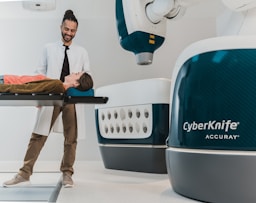Virtual Opioid Addiction Treatment: Suboxone, Buprenorphine, Depression & Telemedicine
The opioid crisis continues to affect millions of individuals and families across the United States, highlighting an urgent need for accessible, effective, and timely addiction treatment options. With advancements in telemedicine, virtual opioid addiction treatment is rapidly emerging as a life-saving solution. Medications like Suboxone—which contains Buprenorphine and Naloxone—are increasingly being prescribed through online platforms, making it easier than ever for individuals to begin and maintain recovery from opioid use disorder (OUD).
In this article, we explore how virtual care works for opioid addiction, how Suboxone and Buprenorphine aid in treatment, the link between opioid use and depression, and how online Suboxone treatment through telemedicine is changing the recovery landscape.
Understanding Opioid Use Disorder and Its Mental Health Impact
Opioid use disorder is a chronic condition characterized by the compulsive use of opioids despite negative consequences. It often stems from the misuse of prescription painkillers or illicit drugs like heroin. One of the most devastating aspects of OUD is its close relationship with mental health issues, particularly depression.
Many individuals with opioid addiction experience major depressive episodes. Depression may contribute to drug use as a form of self-medication, and in turn, opioid dependence can worsen depressive symptoms. Addressing both conditions simultaneously is essential for long-term recovery—this is where virtual opioid addiction treatment can make a significant difference.
What Is Virtual Opioid Addiction Treatment?
Virtual opioid addiction treatment refers to the use of telehealth technology to deliver comprehensive addiction care remotely. Instead of in-person visits, patients meet with licensed healthcare providers via video calls or secure online platforms. This virtual model often includes:
Medical evaluations and diagnoses
Suboxone or Buprenorphine prescriptions
Ongoing monitoring and medication adjustments
Access to therapy or behavioral counseling
Relapse prevention support
This remote approach offers privacy, flexibility, and convenience—especially critical for individuals in rural or underserved communities who may lack local treatment options.
Suboxone and Buprenorphine: A Game-Changer in Addiction Medicine
At the heart of many telemedicine-based OUD programs is Suboxone, a medication that combines Buprenorphine and Naloxone.
Buprenorphine: The Partial Agonist
Buprenorphine is a partial opioid agonist, meaning it activates the brain's opioid receptors but to a much lesser extent than drugs like heroin or morphine. This helps:
Alleviate withdrawal symptoms
Reduce cravings
Stabilize brain chemistry
Lower the risk of misuse and overdose
Naloxone: The Safety Net
Naloxone, the second ingredient in Suboxone, acts as an opioid antagonist. It blocks and reverses the effects of opioids, particularly in the event of an overdose. When taken as prescribed, Naloxone remains inactive, but if Suboxone is misused (e.g., injected), it can trigger withdrawal symptoms to discourage abuse.
This powerful combination makes Suboxone a leading option for medication-assisted treatment (MAT) in both traditional and virtual settings.
How Online Suboxone Treatment Works
Online Suboxone treatment involves several streamlined steps through telemedicine platforms:
1. Initial Assessment
Patients typically begin by completing an online intake form or questionnaire. A licensed provider then conducts a video consultation to review medical history, substance use patterns, and readiness for treatment.
2. Prescription of Suboxone
If clinically appropriate, the provider may prescribe Suboxone after the evaluation. The prescription is sent electronically to a local or mail-order pharmacy for convenient access.
3. Induction and Monitoring
During the induction phase, the patient begins Suboxone under medical supervision (which may be virtual). Providers offer guidance on dosage and manage side effects or complications.
4. Follow-Up Visits
Ongoing video check-ins ensure patients remain stable, adherent, and engaged in recovery. These appointments may be weekly or monthly, depending on the stage of treatment.
5. Integrated Counseling and Support
Many platforms also provide access to licensed therapists for behavioral counseling, addressing co-occurring conditions like depression and helping patients develop healthy coping skills.
Benefits of Telemedicine for Opioid Recovery
Telemedicine for opioid use disorder offers several advantages over traditional care models:
Increased Access to Care
With virtual opioid addiction treatment, patients no longer need to travel long distances or wait weeks for appointments. Treatment becomes accessible from the comfort of home.
Reduced Stigma
Telehealth allows individuals to receive care discreetly, reducing the fear of judgment or discrimination that often deters people from seeking help.
Flexible Scheduling
Busy professionals, parents, and those with transportation issues can schedule virtual visits around their lives, improving adherence to treatment.
Continuity of Care
Even during life disruptions—such as travel, illness, or a move—telemedicine ensures uninterrupted access to treatment and support.
Depression and Opioid Addiction: Why Dual Treatment Matters
As mentioned earlier, depression and opioid addiction frequently co-exist. In fact, studies show that individuals with mood disorders are more likely to misuse opioids, and vice versa. This complex relationship requires a dual-diagnosis approach that treats both conditions concurrently.
Through virtual opioid addiction treatment, healthcare providers can:
Monitor mood symptoms
Prescribe antidepressants if appropriate
Refer to virtual therapy or cognitive behavioral therapy (CBT)
Offer education and resources for managing emotional health
Combining Suboxone treatment with therapy for depression increases the chances of long-term sobriety and improved quality of life.
Is Virtual Opioid Addiction Treatment Safe and Legal?
Yes, when administered by licensed medical professionals via accredited telemedicine platforms, virtual Suboxone treatment is both safe and legal. In recent years, regulatory changes have expanded access to telehealth for addiction care. For instance, the Ryan Haight Act now allows providers to prescribe Buprenorphine online without an initial in-person visit, provided they meet specific telehealth guidelines.
Patients should always seek treatment through verified services that:
Employ board-certified addiction specialists
Use secure HIPAA-compliant technology
Offer ongoing monitoring and follow-up care
Finding the Right Virtual Addiction Treatment Provider
If you're considering virtual care for yourself or a loved one, here are key features to look for in an online Suboxone provider:
Same-day or next-day appointments
Access to Suboxone prescriptions
Integrated therapy or mental health support
Transparent pricing and insurance acceptance
24/7 crisis support or helpline availability
Leading telemedicine platforms now specialize in addiction recovery, offering both medication and holistic care to support healing from all angles.
Conclusion: Embracing a Digital Future for Addiction Recovery
As the world becomes more connected and digital solutions expand, virtual opioid addiction treatment represents a powerful shift in how we approach recovery. With medications like Suboxone and Buprenorphine, combined with therapy for conditions like depression, online care is bridging gaps in access, reducing stigma, and saving lives.
Whether you’re beginning your recovery journey or helping a loved one seek help, telemedicine provides a compassionate, convenient, and effective path forward. Recovery is possible—now more than ever, it’s just a click away.


3750 N Henry Blvd Stockbridge GA 30281


